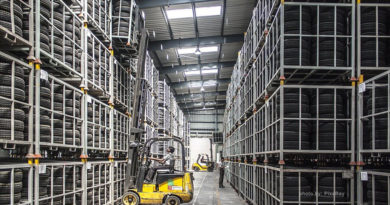Technology trends
Technological trends in enterprises
Metaverse
Artificial intelligence
Cloud
Flexibility of IT specialists
Decentralization of architecture and ecosystems
Modernization of systems
Technological trends in enterprises
Technology trends that will have a significant impact on businesses in the coming months have been identified. This is especially important in 2023 and in subsequent years. These trends are based on three fundamental pillars driving technological developments: technology governance, digital security and platform modernization – which are the foundations for companies. However, along with this, new technological innovations are also emerging, and introducing them requires a balance of activities.
Metaverse
The Metaverse is transitioning from the field of entertainment to the realm of business, where companies develop business models that take advantage of the possibilities of virtual reality. This allows businesses to interact with customers. It is predicted that by 2026, around 25% of consumers will spend at least an hour in the metaverse every day. Currently, only 30% of companies have ready products and services that they can present there
Artificial intelligence
The use of artificial intelligence in business operations is constantly growing. Algorithms based on this technology are capable of performing tasks similar to those performed by humans. They also enter the area of decision-making, which is no longer limited to simple calculations or basic number processing. Enterprises using AI realize that building trust is key. By using technologies, we must gain the trust of customers, otherwise they will not be interested in using them.
Cloud
The increasing use of the cloud makes it difficult for some enterprises to support multiple use cases. many of them are already using them successfully. The multicloud concept can provide a solution to this problem. Its goal is to optimize the complexity of cloud environments. This is thanks to the provision of a single control panel that allows multiple cloud platforms to access common services. Companies also need to consider cybersecurity and legal aspects when using the cloud. We cannot store and process all data in this way because not all data is publicly available and not all data can be stored securely. There are still many questions ahead of this technology that interested enterprises are looking for answers to.
Flexibility of IT specialists
Dynamic technological progress is also a challenge for professionals in this field. Tech skills quickly become obsolete and you need to keep up with the latest trends. Companies cannot hire new employees with every technological change to meet development demands. That is why the emphasis is now on the flexibility of employees, their willingness to learn, acquire new qualifications and adapt to changes.
Professionals should not only build an organizational structure based on IT skills, but they should also have interpersonal skills that will enable flexible development of employees in the area of new technologies. This challenge concerns not only technological aspects, but also requires a new approach from all stakeholders.
Decentralization of architecture and ecosystems
Decentralization of architecture and ecosystems involves the dispersion of power, control and resources across information systems and communities. This means that there is no central management point or one main decision-making centre. Instead, power and responsibility are spread across multiple nodes that interact with each other to achieve goals.
Blockchain technology systems have become a key element in the process of creating and monetizing digital assets. Their use is not limited to this. Blockchain is also used in building digital trust, which is the basis for increasing the credibility of companies. This technology, based on interconnected records using cryptography, finds its application in applications, business models, IT architecture, systems, supply chains and cybersecurity.
Modernization of systems
Given the dynamic pace of technological development, the disposal of obsolete systems is not profitable. Instead, organizations prefer a continuous modernization strategy that combines existing systems with new technologies. One of the solutions that may be an answer to this challenge is mainframe technology. Thanks to it, we can support existing software for many decades. This enables the use of IT solutions that were created even in the previous century. Mainframe servers provide the highest performance available on the market, flexible scalability, high availability (HA) and uninterrupted operation even in the event of major failures (DR).
Nevertheless, companies do not limit themselves to this solution. Entrepreneurs are constantly looking for systems that can be expanded and supplemented with technological progress, instead of having to replace them.




